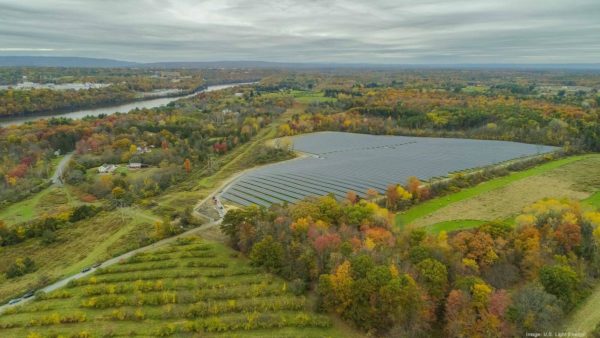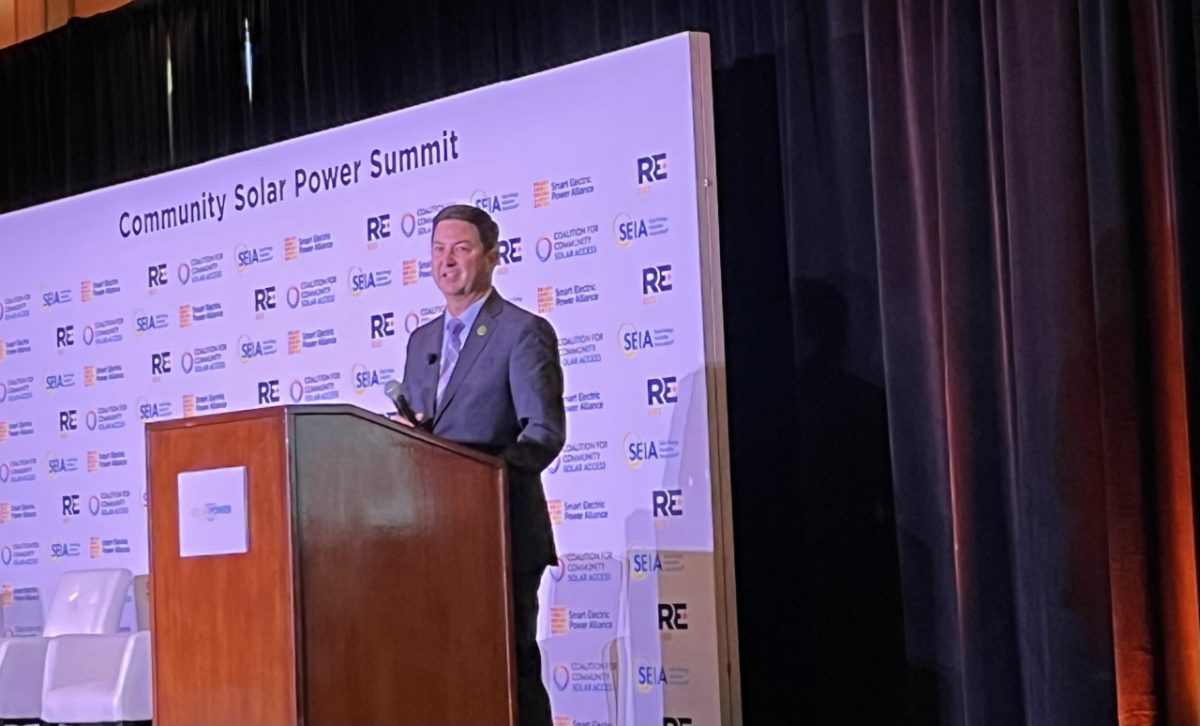Championed by assembly member Chris Ward, AB 2316, the Community Renewable Energy Act takes aim at four acute problems in the California power market: reliability, rates, climate, and equity.
The law creates a community renewable energy program, including community solar-plus-storage, to overcome access barriers for nearly half of Californians who rent or have low incomes. Community solar typically involves customers subscribing to an off-site solar facility, receiving a utility bill credit for the power it generates.
pv magazine USA joined industry players, community stakeholders, and political leaders in San Diego this week at the RE+ Community Solar Power Summit, to discuss the foundations of this emerging market in California and countrywide.
Now that the law has been passed following a signature from Governor Gavin Newsom, the California Public Utilities Commission (CPUC) will undergo a rulemaking process. Public comment will close Friday, January 20, and will be revisited in February once the Internal Revenue Service offers guidance on how to access funds contained in the Inflation Reduction Act (IRA).
Ward delivered a keynote speech at the conference, noting that there is “strong political will” throughout the state legislature to “leave no stone unturned” in pushing forward toward the state’s clean energy goals. He promised that he has been “holding the CPUC’s feet to the fire” to move through the rulemaking process in a timely manner, as the board has been notorious for dragging its feet in the past.
The law, which was passed in under a year, moved through legislation must faster than usual because it represents a “product market fit,” said Richard Caperton, vice president of policy and market development at Arcadia, a cleantech data provider.
Caperton presented in a panel along with representatives from Solar Landscape, Dimension Energy, and the Solar Energy Industries Association (SEIA). The panel generally shared the sentiment that the law has come just in time to address the needs of California’s grid and its ratepayers.
This “good timing” comes as the state has proceeded to slash incentives for rooftop solar, while the federal government opens up funds via the IRA to boost cleantech over the next decade. The panel members and other industry stakeholders are working actively with CPUC to ensure that this window of opportunity is not missed.
Two attempts have been made in the past in California to set up a community solar market, and they have generally been considered failures due to poor structuring. The Enhanced Community Renewables within the Green Tariff Shared Renewables program (GTSR) has zero projects in operation after nine years due to unfinanceable rates, said the Community for Solar Access (CSA). CSA said another model, the Community Solar-Green Tariff program is also ineffective as it is expensive, fails to support disadvantaged communities, and a mechanism for controlling cost shift onto non-participants is limiting the program’s growth.
The panel expressed that AB 2316’s language is stronger than those programs of the past. It is based on New York’s program, which has established the state as the nation’s leader in community solar. While past community solar programs (and rooftop solar programs) have been nixed due to cross-subsidization of participants by non-participants, this new program bases compensation rates on this “cost shift.”
The new program will base its bill credit rates on the Avoided Cost Calculator (ACC), which aims to maximize compensation rates while leading to no cost shift. While the ACC has been criticized for being more friendly to investor-owned utilities and less so to ratepayers, the panel noted that it can be updated every two years. Rick Umoff, senior director and council, California, SEIA, said that deferred transmission and distribution costs need to be more properly evaluated in future ACC rate calculations.
Umoff shared that a proposed decision on the rules of this program could come as early as July 2023, but there is a possibility that the procedure lasts until late 2023 or even early 2024.
Rates, reliability, climate, equity
Umoff described the new community solar program as “Wholesale DG” (distributed generation). This model of building power generation touches on the four problems of rates, reliability, climate, and equity.
It addresses ratepayer problems by adding low-cost energy to the grid. The Department of Energy estimates community solar subscribers save an average of 20% on their bills. The distributed nature of community solar generally requires significantly less transmission and distribution infrastructure to support it when compared to the traditional centralized model of power generation, which should pass forward to ratepayers as savings.
When paired with energy storage, the technology vastly improves resilience. Under ever-increasing extreme weather threats, a decentralized structure of power generation lessens or negates the downtime caused by a downed transmission wire or knocked-out central power source.
Community solar fights climate-change causing emissions and furthers the march towards a decarbonized energy sector. The Biden Administration set a goal this year to sign up 5 million community solar households, achieving $1 billion in bill savings by 2025. The community solar model only represents about 8% of the total distributed solar capacity in the nation. This target would entail a jump from 3 GW installed capacity to 20 GW by the target year.

Image: U.S. Light Energy
(Read: “Inside the national push for community solar”)
The program has energy equity baked into its structure, working to make sure Californians of all income levels participate in the benefits of the energy transition. Not only does it open solar access to renters, the law ensures that at least 51% of subscribers are low-income customers, which is expected to make projects eligible for a 10% tax credit adder under the IRA.
Plus, fossil fuel peaker plants, which are known to cause a myriad of serious harms to public health, are typically located in low-income communities. By building solar in these communities, California can accelerate the retirement of fossil fuel plants.
The Community Renewable Energy Act was sponsored by the Coalition for Community Solar Access, and met with strong support from groups like SEIA, GRID Alternatives, Vote Solar, the Sierra Club, the Union of Concerned Scientists, the Natural Resources Defense Council, and many others.
Notably, investor-owned utilities, which serve over 75% of the electricity usage in the state, opposed the bill. Pacific Gas and Electric, San Diego Gas & Electric, and Southern California Edison all signed on in opposition to the bill.
“Community renewable energy is a proven powerful tool to help close California’s clean energy gap, bringing much needed relief to millions struggling with high housing costs and utility debt,” said Alexis Sutterman, energy equity program manager at the California Environmental Justice Alliance. “All families will finally have a choice to save on electric bills while unplugging from dirty power and joining the fight against climate change. As this program takes off, California will build the affordable and reliable clean energy supplies needed to retire polluting fossil fuel-powered plants in environmental justice communities and pursue a cleaner, safer future.”
This content is protected by copyright and may not be reused. If you want to cooperate with us and would like to reuse some of our content, please contact: editors@pv-magazine.com.









By submitting this form you agree to pv magazine using your data for the purposes of publishing your comment.
Your personal data will only be disclosed or otherwise transmitted to third parties for the purposes of spam filtering or if this is necessary for technical maintenance of the website. Any other transfer to third parties will not take place unless this is justified on the basis of applicable data protection regulations or if pv magazine is legally obliged to do so.
You may revoke this consent at any time with effect for the future, in which case your personal data will be deleted immediately. Otherwise, your data will be deleted if pv magazine has processed your request or the purpose of data storage is fulfilled.
Further information on data privacy can be found in our Data Protection Policy.